Thingiverse

Simple Gear Example-Inkscape to Openscad by mizliz
by Thingiverse
Last crawled date: 3 years ago
This example is based on the following resources:http://blog.makezine.com/archive/2010/06/make-your-own-gears.htmlhttp://repraprip.blogspot.com/2011/05/inkscape-to-openscad-dxf-tutorial.htmlhttp://www.iheartrobotics.com/search/label/OpenSCADGear basics
If you know any two things about gears—outer diameter and number of teeth—you can use some simple equations to find everything else you need to know, including the correct center distance between them.
Number of Teeth (N)
How many teeth are there in the gear
Pitch Diameter (D):
The circle on which two gears effectively mesh, about halfway through the tooth. The pitch diameters of two gears will be tangent when the centers are spaced correctly.
Diametral Pitch (P):
The number of teeth per inch of the circumference of the pitch diameter. Think of it as the density of teeth—the higher the number, the smaller and more closely spaced the teeth on a gear. Common diametral pitches for hobby-size projects are 24, 32, and 48. The diametral pitch of all meshing gears must be the same.
Circular Pitch (p) = pi / P:
The length of the arc between the center of one tooth and the center of a tooth next to it. This is just pi (ï€ = 3.14) divided by the diametral pitch (P). Although rarely used to identify off the shelf gears, you may need this parameter when modeling gears in 2D and 3D software like we're doing here. As with diametral pitch, the circular pitch of all meshing gears must be the same.
Outside Diameter (Do):
The biggest circle that touches the edges of the gear teeth. You can measure this using a caliper like Sparkfun.com's # TOL-00067.
Note: Gears with an even number of teeth are easiest to measure, since each tooth has another tooth directly across the gear. On a gear with an odd number of teeth, if you draw a line from the center of one tooth straight through the center across the gear, the line will fall between two teeth. So, just be careful using outside diameter in your calculations if you estimated it from a gear with an odd number of teeth.
Center Distance (C):
Half the pitch diameter of the first gear plus half the pitch diameter of the second gear will equal the correct center distance. This spacing is critical for creating smooth running gears.
Pressure Angle:
The angle between the line of action (how the contact point between gear teeth travels as they rotate) and the line tangent to the pitch circle. Standard pressure angles are, for some reason, 14.5&Acir;° and 20°. A pressure angle of 20° is better for small gears, but it doesn't make much difference. It's not important to understand this parameter, just to know that the pressure angle of all meshing gears must be the same.
Addendum:
how much the tooth protudes beyond the pitch radius
Dedendum:
how deep goes the tooth before any fillet take place
Pressure angle:
The angle between the radial direction and the tangent to the tooth at the pitch circle. 20 is a good value.
Some Rules
The value of the base circle is based on pressure angle.
1.The smaller the pressure angle, the smaller the base radius
2. The addendum must be less than the dedendum
3. The dedendum must be more than the difference between the pitch and the base radius.
All of these gear parameters relate to each other with simple equations.
To Get
You Have
Equation
Diametrical Pitch(P)
Number of teeth per unit length
Circular Pitch(p)
Number of Teeth(N) & Pitch Diameter(D)
Number of Teeth(N) & Outside Diameter (Do)
P=Ï€/p
P=N/D
P=(N+2)/Do(approx)
Circular Pitch(p)Length of the arc from one tooth to the next
Diametrical Pitch (P)
p=Ï€/P
Pitch Diameter(D)
Number of Teeth(N) & Diametrical Pitch(P)
Outside Diameter (Do)
&Diametrical Pitch(P)
D=N/P
D=Do-2/P
Number of Teeth(N)
Diametrical Pitch(P) & Pitch Diameter(D)
N=P*D
Center Distance(CD)
Pitch Diameter(D)
Number of Teeth(N) & Diametrical Pitch(P)
CD=(D1+D2)/2CD=(N1+N2)/2P
If you know any two things about gears—outer diameter and number of teeth—you can use some simple equations to find everything else you need to know, including the correct center distance between them.
Number of Teeth (N)
How many teeth are there in the gear
Pitch Diameter (D):
The circle on which two gears effectively mesh, about halfway through the tooth. The pitch diameters of two gears will be tangent when the centers are spaced correctly.
Diametral Pitch (P):
The number of teeth per inch of the circumference of the pitch diameter. Think of it as the density of teeth—the higher the number, the smaller and more closely spaced the teeth on a gear. Common diametral pitches for hobby-size projects are 24, 32, and 48. The diametral pitch of all meshing gears must be the same.
Circular Pitch (p) = pi / P:
The length of the arc between the center of one tooth and the center of a tooth next to it. This is just pi (ï€ = 3.14) divided by the diametral pitch (P). Although rarely used to identify off the shelf gears, you may need this parameter when modeling gears in 2D and 3D software like we're doing here. As with diametral pitch, the circular pitch of all meshing gears must be the same.
Outside Diameter (Do):
The biggest circle that touches the edges of the gear teeth. You can measure this using a caliper like Sparkfun.com's # TOL-00067.
Note: Gears with an even number of teeth are easiest to measure, since each tooth has another tooth directly across the gear. On a gear with an odd number of teeth, if you draw a line from the center of one tooth straight through the center across the gear, the line will fall between two teeth. So, just be careful using outside diameter in your calculations if you estimated it from a gear with an odd number of teeth.
Center Distance (C):
Half the pitch diameter of the first gear plus half the pitch diameter of the second gear will equal the correct center distance. This spacing is critical for creating smooth running gears.
Pressure Angle:
The angle between the line of action (how the contact point between gear teeth travels as they rotate) and the line tangent to the pitch circle. Standard pressure angles are, for some reason, 14.5&Acir;° and 20°. A pressure angle of 20° is better for small gears, but it doesn't make much difference. It's not important to understand this parameter, just to know that the pressure angle of all meshing gears must be the same.
Addendum:
how much the tooth protudes beyond the pitch radius
Dedendum:
how deep goes the tooth before any fillet take place
Pressure angle:
The angle between the radial direction and the tangent to the tooth at the pitch circle. 20 is a good value.
Some Rules
The value of the base circle is based on pressure angle.
1.The smaller the pressure angle, the smaller the base radius
2. The addendum must be less than the dedendum
3. The dedendum must be more than the difference between the pitch and the base radius.
All of these gear parameters relate to each other with simple equations.
To Get
You Have
Equation
Diametrical Pitch(P)
Number of teeth per unit length
Circular Pitch(p)
Number of Teeth(N) & Pitch Diameter(D)
Number of Teeth(N) & Outside Diameter (Do)
P=Ï€/p
P=N/D
P=(N+2)/Do(approx)
Circular Pitch(p)Length of the arc from one tooth to the next
Diametrical Pitch (P)
p=Ï€/P
Pitch Diameter(D)
Number of Teeth(N) & Diametrical Pitch(P)
Outside Diameter (Do)
&Diametrical Pitch(P)
D=N/P
D=Do-2/P
Number of Teeth(N)
Diametrical Pitch(P) & Pitch Diameter(D)
N=P*D
Center Distance(CD)
Pitch Diameter(D)
Number of Teeth(N) & Diametrical Pitch(P)
CD=(D1+D2)/2CD=(N1+N2)/2P
Similar models
grabcad
free

Cycloidal Gear Design
...aking/cycloidalgears/index.jxl
you can verify your design by using this link:
http://hessmer.org/gears/cycloidalgearbuilder.html
grabcad
free

Equation Driven Involute Gear in SOLIDWORKS
...r set the following parameters:
- number of teeth (n)
- dimetral pitch (p)
- pressure angle (a)
- hole diameter (dh)
- length (l)
grabcad
free

bevel gera
...ht)
• ht = (2.188/p) + 0.002
• ht = (2.188/0.273) + 0.002 = 8.016
calculate dedendum (b)
• b = ht – a
• b = 8.016– 3.66 = 11.67
grabcad
free

Gear 45Teeth
...gear 45teeth
grabcad
pressure angle: 20.00 deg bore diameter: 1.875" diametral pitch: 10 teeth number: 45 backlash: 3.00%
grabcad
free

SPUR GEAR
...spur gear
grabcad
number of teeth - 18
diametrical pitch - 2
pressure angle - 20 degree
grabcad
free

STS20/50B - Involute Spur gear
...ar (sts20/50b) having
pitch circle diameter = 100 mm
number of teeth = 50
pressure angle = 20 degree full depth
grabcad
free

involute spur gear
...le= 20deg
pitch circle radius= 9mm
number of teeth= 12
module= 1.5
gear profile drawn using equation driven curve of an involute
grabcad
free

Inch Parametric Involute Spline Gear Set - SW 2015 EDU
...gn the base of the spline on base circle directly. the spline location is currently set with a coincident mate on the tooth width
grabcad
free

Spur Gear with extruded text
...4
outside diameter: 3-1/4"
face width: 1/4"
bore diameter: 7/8"
keyway size: 3/16"
pressure angle: 20 degrees
grabcad
free

Gear DP8-60T
...l pitch : dp8
no. of teeth : 60
pitch diameter : 190.500
major diameter : 196.850
root diameter : 182.563
pressure angle : 20deg.
Mizliz
thingiverse
free

Star by mizliz
...star by mizliz
thingiverse
this is a test
thingiverse
free

Memory by mizliz
...memory by mizliz
thingiverse
an installation involving memory.
thingiverse
free

stunning_jarv.stl by mizliz
...stunning_jarv.stl by mizliz
thingiverse
a box for my annoying noises.
thingiverse
free

sculpture by mizliz
...sculpture by mizliz
thingiverse
scanned with the makerbot digitizer desktop 3d scanner
thingiverse
free

Eagle by mizliz
...eagle by mizliz
thingiverse
captured on 6/17/12 at amnh with 123dcatch
thingiverse
free

Woodpecker by mizliz
...woodpecker by mizliz
thingiverse
captured 6/17/12 at amnh with 123d catch
thingiverse
free

Camarasaurus by mizliz
...camarasaurus by mizliz
thingiverse
the skull of camarasaurus.
captured on 6/17/12 at amnh
thingiverse
free

dupiguinck by mizliz
...dupiguinck by mizliz
thingiverse
created by a student in my summer workshop using mesh mixer
thingiverse
free

Frankenstein Walker by mizliz
...frankenstein walker by mizliz
thingiverse
student project
thingiverse
free

Pattern Maker by mizliz
...pattern maker by mizliz
thingiverse
a parametric pattern maker
Inkscape
3d_ocean
$15

Boeing 747-300 airliner
...were created with textures,which were created with vector software inkscape... ...
3d_ocean
$19

Gulfstream G650 N650 GA lowpoly business jet
...render.most of the details created with png textures,created with inkscape vector editor.there are png uv map for...
thingiverse
free

Inkscape keychain by pablogil
...inkscape keychain by pablogil
thingiverse
stylized inkscape logo
thingiverse
free

Inkscape OpenSCAD DXF Export - update for Inkscape V0.91 by chris_cki
...r has a dialoge to set the units. settings units to "mm" seem to influence output of the openscad dxf exporter as well.
thingiverse
free

Inkscape font4OpenSCAD extension by sawdusty
...le) for openscad and the write extension. some manual work is necessary in inkscape to finish the process, but it's worth it.
thingiverse
free

InkScape/OpenSCAD cookie cutter maker by Nova1313
...inkscape/openscad cookie cutter maker by nova1313
thingiverse
create cookie cutters using inkscape/openscad!
thingiverse
free
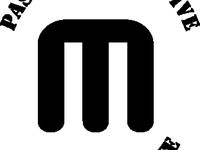
Inkscape to OpenSCAD converter by dnewman
...ath: inkscape already does the proper combining.)
15 june 2012: corrected windows issue with handling of unix-style file paths.
thingiverse
free

2.5D Inkscape 3D Badge by juewei
...t, raised objects, group inheritance, and subtractive objects (kind of anti-matter).
printed on a tronxy-xy100 with 0.2mm in pla.
thingiverse
free

Parametric Spoon from Inkscape outline by clubclay
...outline by clubclay
thingiverse
i wanted to create a spoon from an outline in inkscape using openscad, this is the first result.
thingiverse
free

Eiffel tower paper lasercut, inkscape version by zBis
...eiffel tower paper lasercut, inkscape version by zbis
thingiverse
just an adaptation for inkscape of the original file
Openscad
thingiverse
free
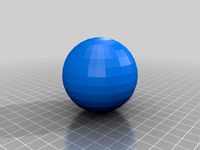
OpenSCAD sphere
...openscad sphere
thingiverse
basic project for openscad.
thingiverse
free
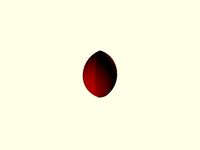
Openscad Football by KySyth
...openscad football by kysyth
thingiverse
openscad not tested
thingiverse
free

Openscad Apple by KySyth
...openscad apple by kysyth
thingiverse
openscad apple = not tested
thingiverse
free

Plugs with openscad by benengel
...plugs with openscad by benengel
thingiverse
plugs with openscad and fontawesome
thingiverse
free
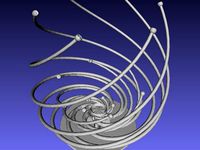
Openscad spirals by mafmuf
...openscad spirals by mafmuf
thingiverse
just fooling around with openscad.
thingiverse
free

Practice on OpenScad by ajensen906
...practice on openscad by ajensen906
thingiverse
a very crude practice on openscad
thingiverse
free
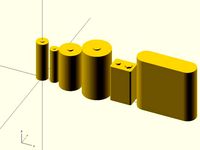
Batteries in OpenSCAD by roman_hegglin
...batteries in openscad by roman_hegglin
thingiverse
common batteries as modules for openscad.
thingiverse
free

OpenScad Propeller by KySyth
...se
trying to make a propeller with openscad = not tested
this is some of the results
added the openscad file but still need work
thingiverse
free
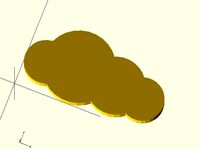
Openscad Cloud by Twanne
...openscad cloud by twanne
thingiverse
openscad cloud.
size can be adjusted
thingiverse
free

Geomag for OpenScad by vicnet
...geomag for openscad by vicnet
thingiverse
openscad file to design geomag things.
Example
3d_export
$5

Example of bathroom design
...example of bathroom design
3dexport
example of bathroom decoration with furniture and plumbing.
turbosquid
free

Greeble Example
... available on turbo squid, the world's leading provider of digital 3d models for visualization, films, television, and games.
turbosquid
free

T3D Character LOD Example
... available on turbo squid, the world's leading provider of digital 3d models for visualization, films, television, and games.
3d_export
$5

the plate for cranioplasty real example
...a congenital malformation of the skull bones. this example is like a sample of 3d printing of a real plate for a specific patient
3d_export
$5

a word or intro made in 3d image is just example
... 3d image is just example
3dexport
i can make 3d words or intro to you by the low orice and by your wish (image is just example)
3d_export
$5

an example of a real organ-preserving operation for osteosarcoma
...clinic. the operation can be performed in most cases if there are no distant metastases and no pathological fracture is detected.
3d_export
$5

living room
...living room 3dexport example of a living room...
3ddd
$1

Кресло
...кресло comfortable leather chair. ideal for a hairdresser for example ...
3d_ocean
$25

sky-HDRi-10
...dynamic radiance skydome panorama in *.exr and *.hdri format. example scene in *.max file format included. it is better...
3d_export
$10

pipe assembly pack
...example scene -obj kit_tube_all.obj - modular kit parts are separate<br>exampleobj-example scene<br>texture only for gauge scale...
Gear
3d_ocean
$4

Gears
...gears
3docean
gear gears iron
4 different size of gears
3d_export
$5

gear
...gear
3dexport
gear
3d_export
free
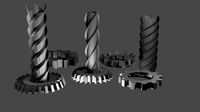
Gears
...gears
3dexport
gears
3d_export
$5
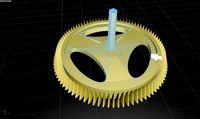
gear
...gear
3dexport
a simple model of gear
3d_export
$5
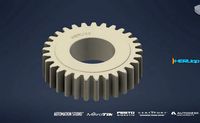
gear
...gear
3dexport
gear for transmission , case machine
3d_ocean
$3
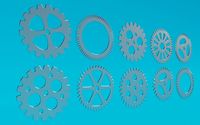
Gears
...nical parts process steampunk vehicle wheel work
10 different gear models volume 01-10 files: .3ds .c4d .obj note: you need vray
3d_ocean
$1

Spur Gear
...spur gear
3docean
decoration gear
a typical spur gear
3d_ocean
$4

Gear wheels
...gear wheels
3docean
engine engineering gear gears industry machinery mechanical toothwheel wheel
pair of gear wheels : animated.
turbosquid
$9
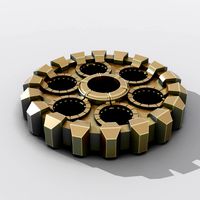
Gear
...gear
turbosquid
royalty free 3d model gear for download as on turbosquid: 3d models for games, architecture, videos. (1712328)
turbosquid
$2
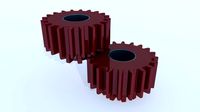
Gears
...rs
turbosquid
royalty free 3d model gears for download as ma on turbosquid: 3d models for games, architecture, videos. (1166710)
Simple
turbosquid
$1

Simple goblet (Taca simples)
... available on turbo squid, the world's leading provider of digital 3d models for visualization, films, television, and games.
3d_export
$5
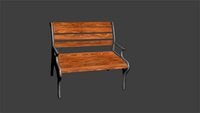
simple bench
...simple bench
3dexport
the simple bench which can be used in simple projects or video-games.
3d_export
$5
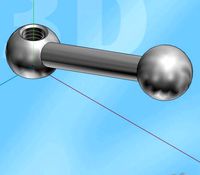
simple knob
...simple knob
3dexport
simple knob
3d_export
$5
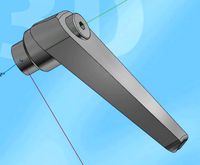
simple handle
...simple handle
3dexport
simple handle
3d_export
$5
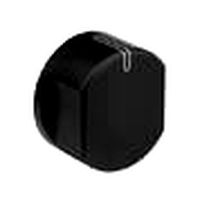
simple button
...simple button
3dexport
simple button
3d_export
$5
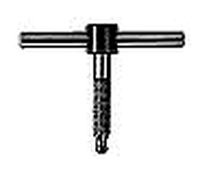
simple spindle
...simple spindle
3dexport
simple spindle
3d_export
$5

simple wheel
...simple wheel
3dexport
simple wheel
3d_export
$5
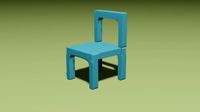
simple chair
...simple chair
3dexport
simple blue chair
3d_export
free

Simple room
...simple room
3dexport
here is a simple but beautiful room
3ddd
free

SIMPLE | Кресло
...io cianfarra , simple
производитель area declic дизайн giulio cianfarra коллекция simple
